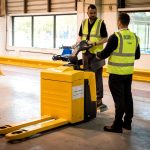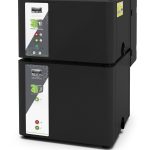 When it comes to safety, every organisation has one priority: keeping people safe. In an emergency situation, knowing who has left the area and who is still inside is crucial. This information can mean the difference between life and death. Tracking multiple people during a mass evacuation can help prevent injuries and fatalities and is an integral part of an Emergency Response Management solution.
When it comes to safety, every organisation has one priority: keeping people safe. In an emergency situation, knowing who has left the area and who is still inside is crucial. This information can mean the difference between life and death. Tracking multiple people during a mass evacuation can help prevent injuries and fatalities and is an integral part of an Emergency Response Management solution.
The manual emergency mustering system is the most common approach employed to evacuate an offshore installation. The benefits of this approach are that it is very easy for staff to follow, the cost of employing such a system is low, and it is a process that is familiar to everyone in the workplace.
However, there are many intrinsic weaknesses in this approach. The system relies on a small number of trained personnel to undertake the subsequent roll call. These individuals are themselves evacuees and, as such, may not have the presence of mind to carry out their duties in a real-life evacuation; in extreme cases, they may not be available.
The manual mustering system also relies heavily on staff following procedures; however, when an actual evacuation takes place, the primary focus of the individuals involved is often solely for their own safety. Therefore, the system that performed adequately during drills may significantly underperform.
The manual mustering system uses several identified mustering points close to the workstations facing evacuation. In a large-scale event, access to these areas may either be denied or extremely dangerous, thus rendering the carefully practised procedures impossible to follow. In this event, the natural reaction of employees is to rapidly disperse.
Paramount to the effectiveness of this system is knowledge of who was in the building at the point of evacuation. Very few organisations have the ability to explicitly identify who is on the premises at any given time. All but the most sophisticated access control systems are flawed, typically by staff’s lack of diligence in maintaining accurate records.
In conclusion, the manual emergency mustering system has a number of benefits but also a number of serious weaknesses. In order to be effective, the system relies on a number of factors which may not be present during an actual evacuation. For this reason, many organisations are now moving towards more sophisticated approaches that can provide greater assurance that all personnel will be accounted for in an evacuation.
Automated emergency mustering solutions like Crew Companion are increasingly being adopted by organisations as a more effective way to track personnel in an evacuation.




